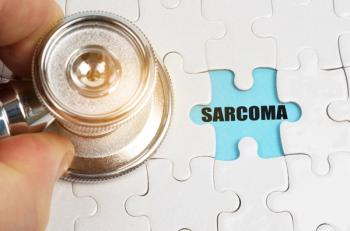
Intensive statin therapy demonstrated to be safe and effective in the elderly
Intensive statin therapy in elderly patients may be more effective than moderate statin therapy in improving lipid levels and reducing all-cause death, according to a prospective, international, multicenter, randomized, double-blind, double-dummy, parallel-arm trial in elderly patients with documented coronary artery disease (CAD).
Key Points
Intensive statin therapy in elderly patients may be more effective than moderate statin therapy in improving lipid levels and reducing all-cause death, according to a prospective, international, multicenter, randomized, double-blind, double-dummy, parallel-arm trial in elderly patients with documented coronary artery disease (CAD). These results from the Study Assessing Goals in the Elderly (SAGE) trial were published in the journal Circulation.
In numerous large, randomized clinical trials, statins have been demonstrated to improve outcomes in patients with acute coronary syndromes. Smaller randomized and observational studies have also demonstrated the benefit of statins in patients with stable CAD. However, elderly patients (aged ≥65 years) have been underrepresented in these studies. The purpose of the current study was to compare the effects of different statin dosing intensities on markers of myocardial ischemia in elderly men and women with stable CAD.
A total of 893 patients aged 65 to 85 years with documented stable CAD, baseline low-density lipoprotein cholesterol (LDL-C) between 100 and 250 mg/dL, and ≥1 episode of myocardial ischemia during 48-hour ambulatory ECG monitoring were randomized to receive either high-intensity statin therapy with atorvastatin 80 mg/d or moderate-intensity statin therapy with pravastatin 40 mg/d. The primary end point was the absolute change from baseline to 12 months in total duration of myocardial ischemia on 48-hour Holter monitoring. Other end points included changes in various lipid levels (including LDL-C, high-density lipoprotein cholesterol [HDL-C], and total cholesterol), total mortality, and the incidence of and time to major acute cardiovascular events (MACE).
High-intensity statin use significantly reduced all-cause mortality versus moderate-intensity use (1.3% vs 4.0%, respectively; HR=0.33; 95% CI, 0.13–0.83;P=.014). There was no significant difference between high-intensity therapy and moderate-intensity therapy in the incidence of MACE during the 12-month follow-up period (8.1% vs 11.2%, respectively; HR=0.71; 95% CI, 0.46–1.09; P=.114). The overall incidence of all-cause adverse events was not statistically different between the groups, with the exception of liver function test abnormalities, which were more frequent in the high-intensity group versus the moderate-intensity group (4.3% vs 0.2%, respectively; P<.001).
The authors stated: "Although there was no significant difference in benefit on total duration of ischemia between the 2 groups, secondary analyses showed that intensive lipid-lowering with atorvastatin 80 mg/d was associated with greater reductions in all-cause mortality and a trend toward fewer MACE." They speculated that the beneficial effects of each group relative to baseline may have been related to negative changes in coronary tone that preceded plaque compistion changes.
In a related editorial, Antonio M. Gotto Jr, MD, DPhil, noted that the prevalence of CAD and other cardiovascular diseases increases with age and is of growing concern given the rapidly aging US population. Despite this elevated risk, Dr Gotto said, epidemiologic studies have suggested that these patients are undermanaged. He pointed out that the current study "provides additional evidence that statins can benefit older patients but raises questions about the optimal intensity of treatment or the best measures of benefit."
SOURCES Deedwania P, Stone PH, Bairey CN, et al. Effects of intensive versus moderate lipid-lowing therapy on myocardial ischemia in older patients with coronary heart disease. Results of the Study Assessing Goals in the Elderly (SAGE). Circulation. 2007;115:700–707.
Gotto AM Jr. Statin therapy and the elderly. SAGE advice? [editorial] Circulation. 2007;115:681–683.
Newsletter
Get the latest industry news, event updates, and more from Managed healthcare Executive.
















































